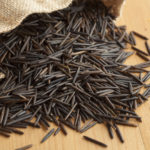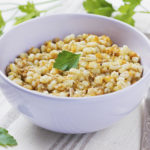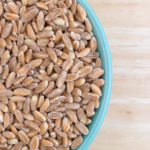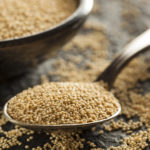Cooking With Grains: Millet
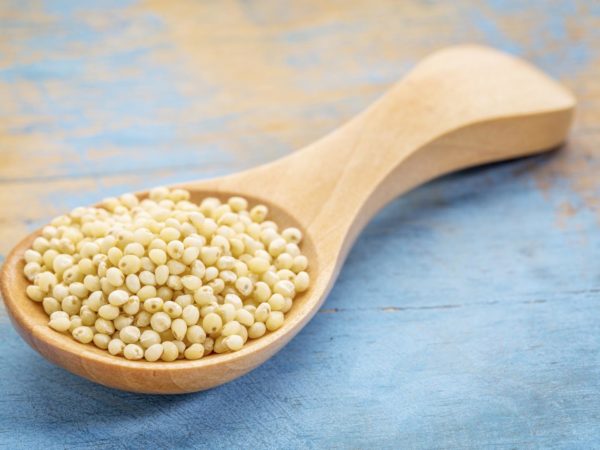
Millet is a versatile grain that originated in Africa, where it was prized for its drought resistance and quick growth even in poor soil. But millet has long been a staple in Eastern Europe, where it’s eaten as porridge or fermented into an alcoholic beverage, and India where it’s ground into flour for a flatbread known as roti. However, you’ll most often see millet recipes that call for millet to be prepared simply and served like rice.
Millet is available pearled or hulled: opt for hulled, which is the true whole-grain variety (“hulled” still retains plentiful fiber, as only the outermost layer is removed). Out of the hull, millet seeds look like tiny yellow beads with dark dots on the side where the plant’s stem was attached. Millet is a good source of manganese, magnesium, and phosphorous – a one-cup serving provides about 30 percent of the Daily Value for each of these nutrients. Millet is gluten-free and easily digestible. Those with thyroid disease should not consume millet in large quantities as it is a mild thyroid peroxidase inhibitor. It will keep in the pantry for two months, or four to six months in the refrigerator or freezer.
Cooking time: 20-30 minutes
Liquid per cup of grain: 2 1/2 cups
Tips on cooking millet: Although not necessary, toasting millet grains prior to cooking can provide a nuttier flavor and a better texture. To dry-toast, place millet in a preheated skillet over medium heat, and stir frequently (about 10 minutes) until golden brown. Combine millet with water in a covered pot and bring to a boil. Once boiling, turn down the heat, cover and simmer for about 25 minutes. Fluffed with a fork when done, millet prepared this way will have a light texture similar to rice. For a creamier, mashed potato-like alternative, stir frequently while cooking, occasionally adding water, until desired consistency is reached.
Try this recipe with millet: Toasted Grain Pilaf


